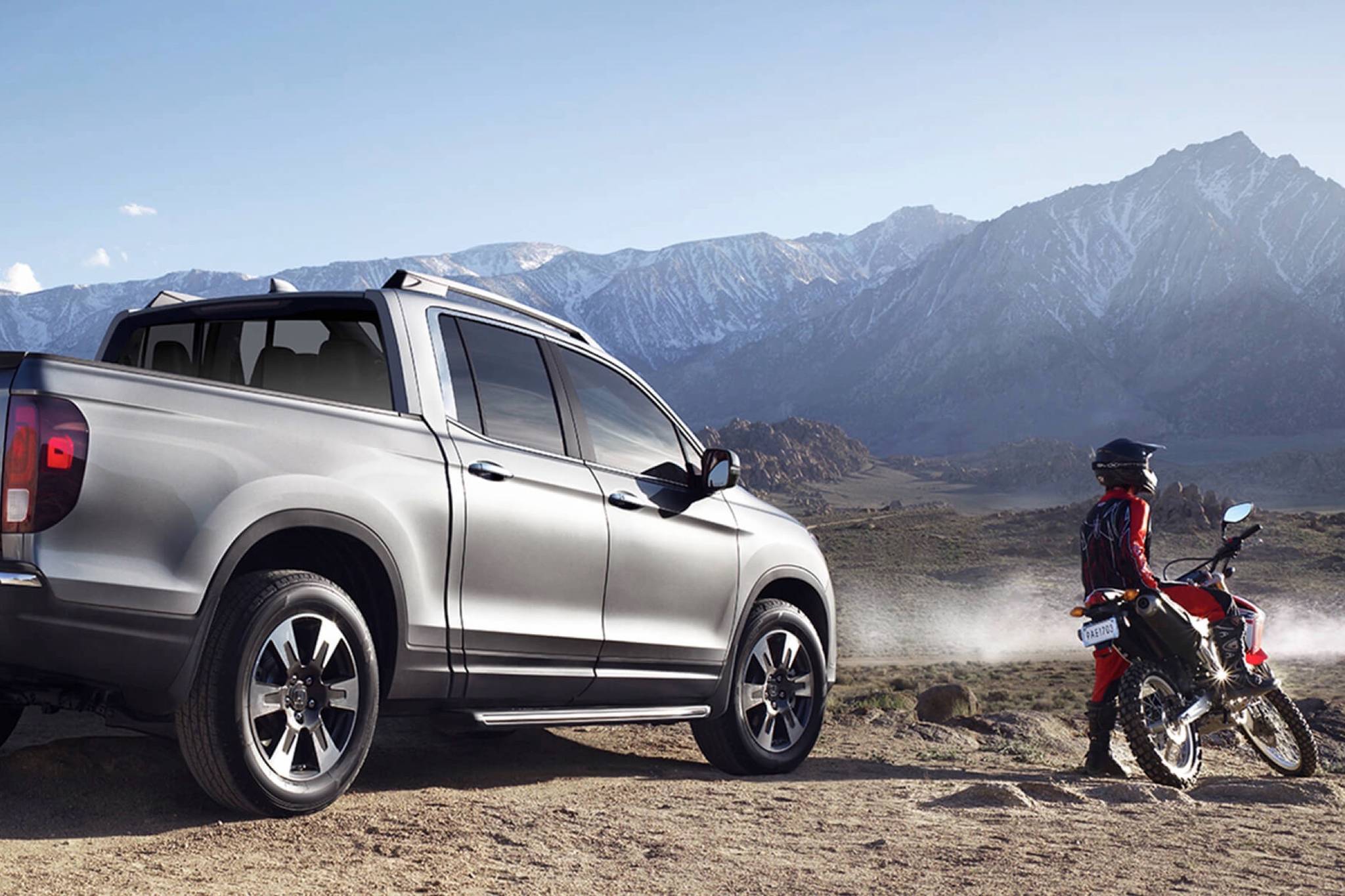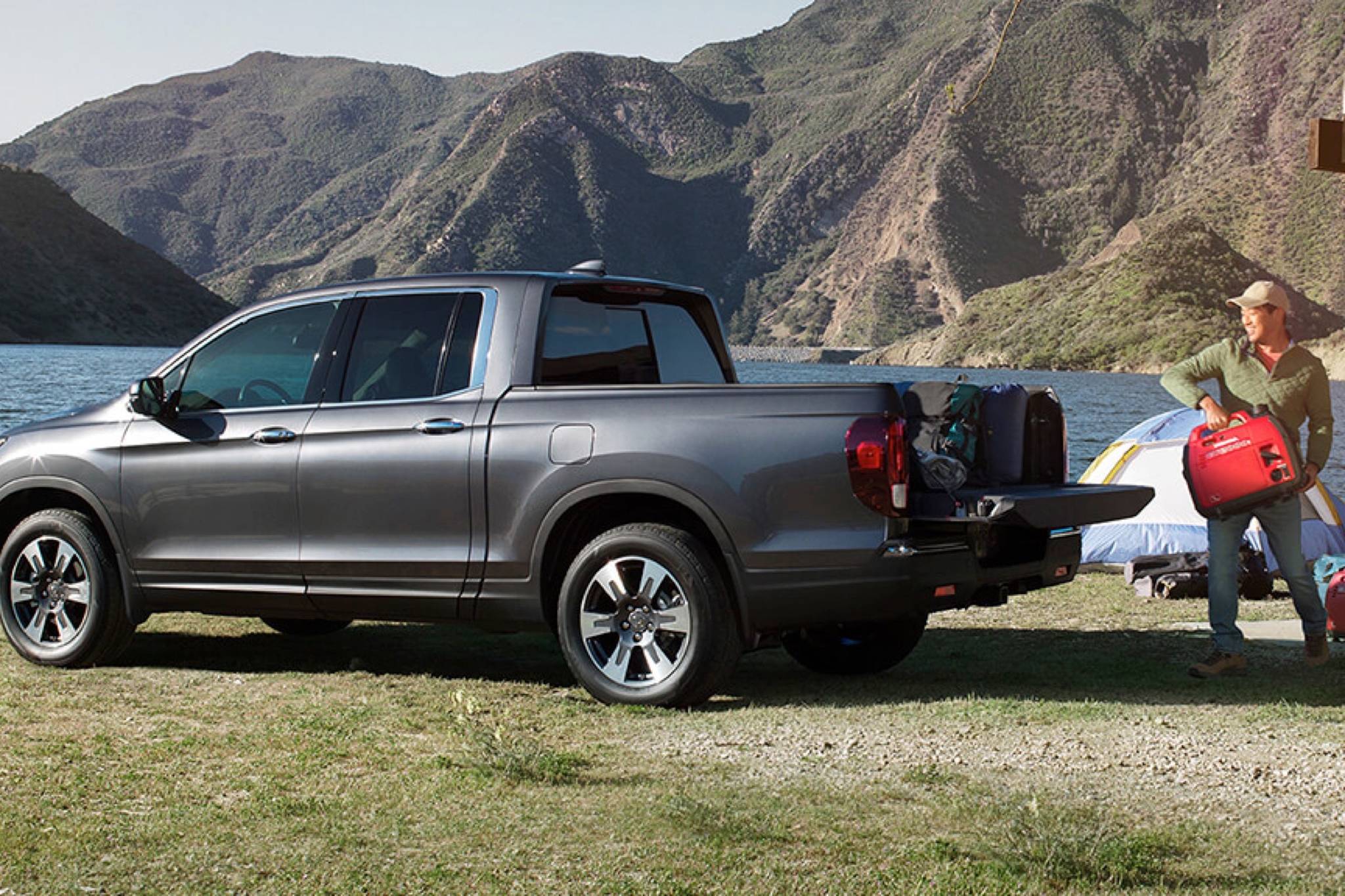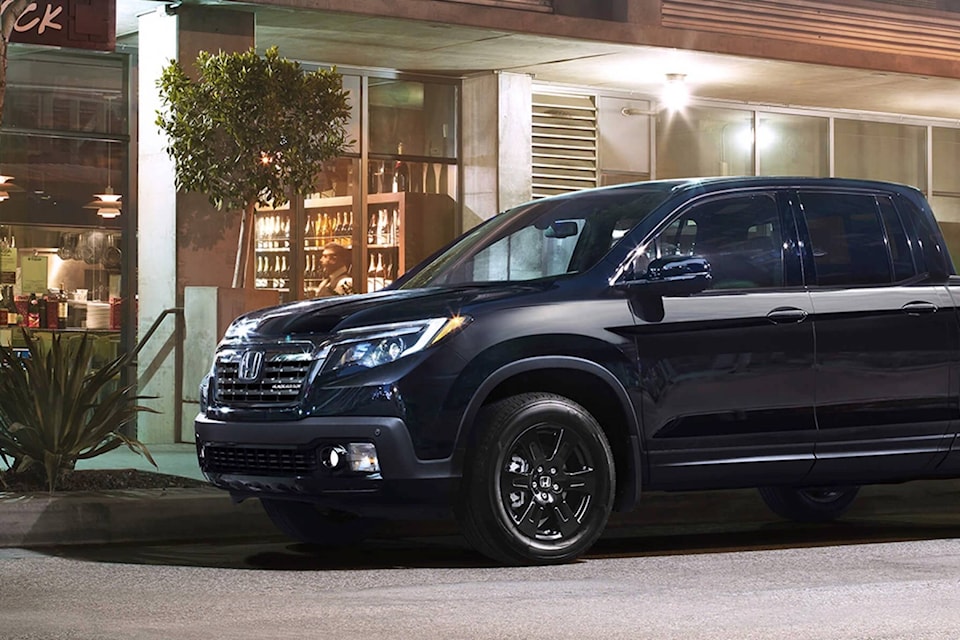The Honda Ridgeline is Honda’s only pickup truck, and plays an important – yet niche – role for this ever evolving company. It is a pickup truck with a bit of an identity crisis, as it is neither a true truck nor a true SUV; this is a vehicle that crosses over both territories and therefore plays a unique spot in the market.
After winning the 2017 North American Truck of the Year, Honda had high hopes for the Ridgeline, but it struggles to keep up with the sales paces of its primary competitors such as the Toyota Tacoma, Chevy Colorado, or most recently, the Ford Ranger mid-size trucks.
Truck buyers tend to be a very loyal bunch, and therefore the Ridgeline has had a hard time breaking into the segment that expects trucks to be body-on-frame, true-to-the-core designs. The Ridgeline is actually based on the Honda Pilot, so its strengths are also its weaknesses: strengths being that the vehicle is car-like, far surpassing other trucks’ road manners - but at the same time, the Ridgeline lacks toughness and ruggedness associated with frame-based trucks.
In fact, despite the fact that Ridgeline receives overwhelmingly positive reviews from magazines and industry specialists, its direct competitor Toyota Tacoma outsells the Ridgeline by 10 to 1 ratio. On the other hand, once people own the Ridgeline, they say they can never go back to traditional frame-based trucks, simply because the car-based Ridgeline performs so much better on normal roads. If you desire to take your truck to true off-road courses, though, it will be more difficult to do that with the Ridgeline as its car-based body and suspension can’t withstand the kind of terrains that body-on-frame trucks eat for breakfast.
Design
Honda has taken a lot of care to create a beautiful and comfortable interior for both the driver and passenger – no doubt having the Pilot as the “baseline” helps here. The interior space of the cabin is generous and the Ridgeline leads the segment in terms of interior space capacity. Visibility is high throughout and the cab has an insulated, quiet feel to it. Heated front and back seats make the drive comfortable, even in the middle of a Canadian winter, not to mention a fully functioning rear window defroster (you can’t get that in most trucks, including the Tacoma).
The exterior has softer styling than the aggressive appearance of other competitors, which can be a plus or a minus depending on individual tastes.
The Honda Ridgeline may have many bells and whistles that are more common in passenger vehicles, but it still offers truck features inside and out. The back bed has many functional features besides just offering storage. Like in Tacoma, the bed is made of a composite plastic, and therefore will never rust.
One unique feature is the deep, practical lockable in-bed trunk, which helps keep your goods safe. This storage is remarkable large and deep, and even can be used as a cooler if you put ice in it as it has a drain hole.
The tailgate has a dual-action feature: it can be pulled down like a regular truck tailgate or swung open sideways to make loading things easier. The bed of the Ridgeline is large (5’4” x 5’) with a clearance of 4’2” of clearance between the wheel wells. Towing capacity is 5,000 lbs and comes with a trailer stability assist safety function. The towing capacity isn’t as high as other competitors, but the Ridgeline can still pull its weight for most people.
The previously mentioned in-bed storage locks and unlocks with the remote, but the actual tailgate doesn’t have a lock, surprisingly (third party option appears available).
With Apple CarPlay and Android Auto capabilities as well as an available Truck-Bed Audio system, the Ridgeline takes tailgate parties quite seriously. The Truck-Bed Audio uses interesting technology to bring the audio sound to the tailgate fans.
Honda Sensing technologies are integrated into the top trim of the Ridgeline to making driving safer – such as the Forward Collision Warning, Collision Mitigation Braking, Lane Departure Warning, Lane Keeping Assist, Road Departure Mitigation and Adaptive Cruise Control. Other active and passive safety features include automatic tire pressure monitoring, hill start assist and auto high beam as well as six standard airbags.
Performance
The Ridgeline offers a 3.5-litre, direct engine i-VTEC V6 engine with 280 horsepower and 262 lb-ft of torque, again borrowed straight from the Honda Pilot. This is enhanced with Honda’s Intelligent Variable Torque Management (i-VTM4) AWD system, which makes the Ridgeline handle more like an SUV than a truck. Paired with that is a 6-speed automatic with Grade Logic Control. Since all of Ridgeline’s competitors have part time 4WD (where you have to manually shift into 4WD on slippery surfaces only), the full-time AWD in Honda’s truck is truly unique in the industry.
What sets the Ridgeline apart from other competitors is the unibody chassis and fully independent front and rear suspension system that allows the pickup to navigate through all kinds of roads. There is a traction management system that allows you to choose between Normal, Snow, Mud or Sand to allow you to travel safely on any terrain. Fuel economy for the Honda Ridgeline is 12.8/9.5/11.3 L/100 kilometres for city/highway/combined, with an optional ECON drive mode setting.
In terms of general road feel, there is nothing that comes close to Honda’s road manners. The Ridgeline steers straight as an arrow, turns on a dime, and provides a silky smooth ride that no trucks can match. It does feel less “truck like,” but I would assume that most people – even diehard truck fans – would prefer the Ridgeline’s refined ride and handling over its competitors’ rough characters.
Summary
The Ridgeline is available in 4 trim levels including the Sport, EX-L, Touring and Black Edition. Moving to the EX-L provides mainly cosmetic and comfort additions, while upgrading to the Touring will add many more practical and “luxury” options including blue ambient lighting and an 150W/400W in-bed power outlet. The black edition is exactly what one would assume - everything is in black theme with the exception of stylish red ambient lighting throughout. The Honda Ridgeline Sport starts from $40,790 and increases to $49,790 MSRP for the Black edition.
Competitors include the Nissan Frontier, Toyota Tacoma, Chevrolet Colorado GMC Canyon, and most recently the Ford Ranger. In summary, the Ridgeline has the comfort and refined spirit of an SUV, with the practicality and cargo of a pickup truck. With an excellent fuel economy and best in-class safety ratings as well as innovative features, the Honda Ridgeline is not a truck to be messed with. Now if only traditional truck buyers would give this vehicle a chance…
If you’re interested in new or used vehicles, be sure to visit TodaysDrive.com to find your dream car today!
- written by David Chao
Like us on Facebook and follow us on Twitter


